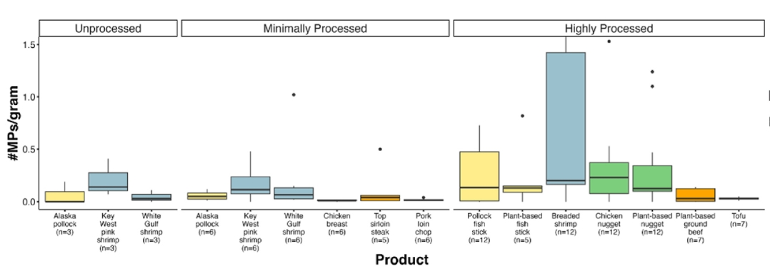There have been postings here expressing concern about the amount of microplastics in seafood. It turns out the degree of processing is the most important variable affecting the amount of microplastics in food, and in most cases vastly outweighs the source, be it terrestrial or oceanic. Above chart is from Exposure Of U.S. Adults To Microplastics From Commonly-Consumed Proteins, located at: sciencedirect.com/science/a...
Among the minimally processed foods tested, shrimp did have a relatively high amount of microplastics, but the other seafood tested, pollock, was relatively low.
Bottled water is also a highly significant source of microplastics. From: pnas.org/doi/10.1073/pnas.2...
"micro-nano plastics in bottled water are analyzed with multidimensional profiling of individual plastic particles. Quantification suggests more than 105 [100,000] particles in each liter of bottled water, the majority of which are nanoplastics"
I replaced my plastic water bottle with a very nice stainless steel model long ago and I'm quite happy with it.
